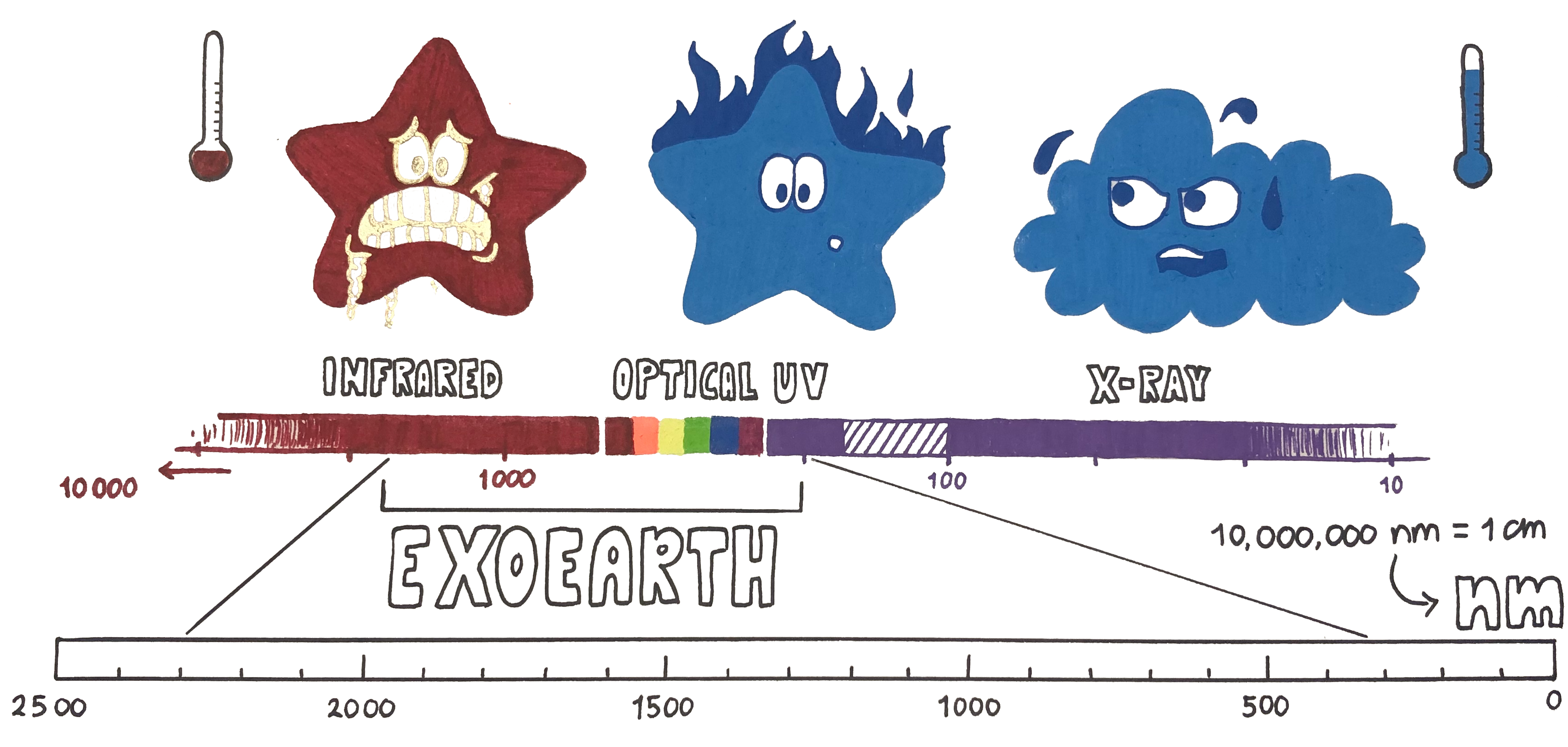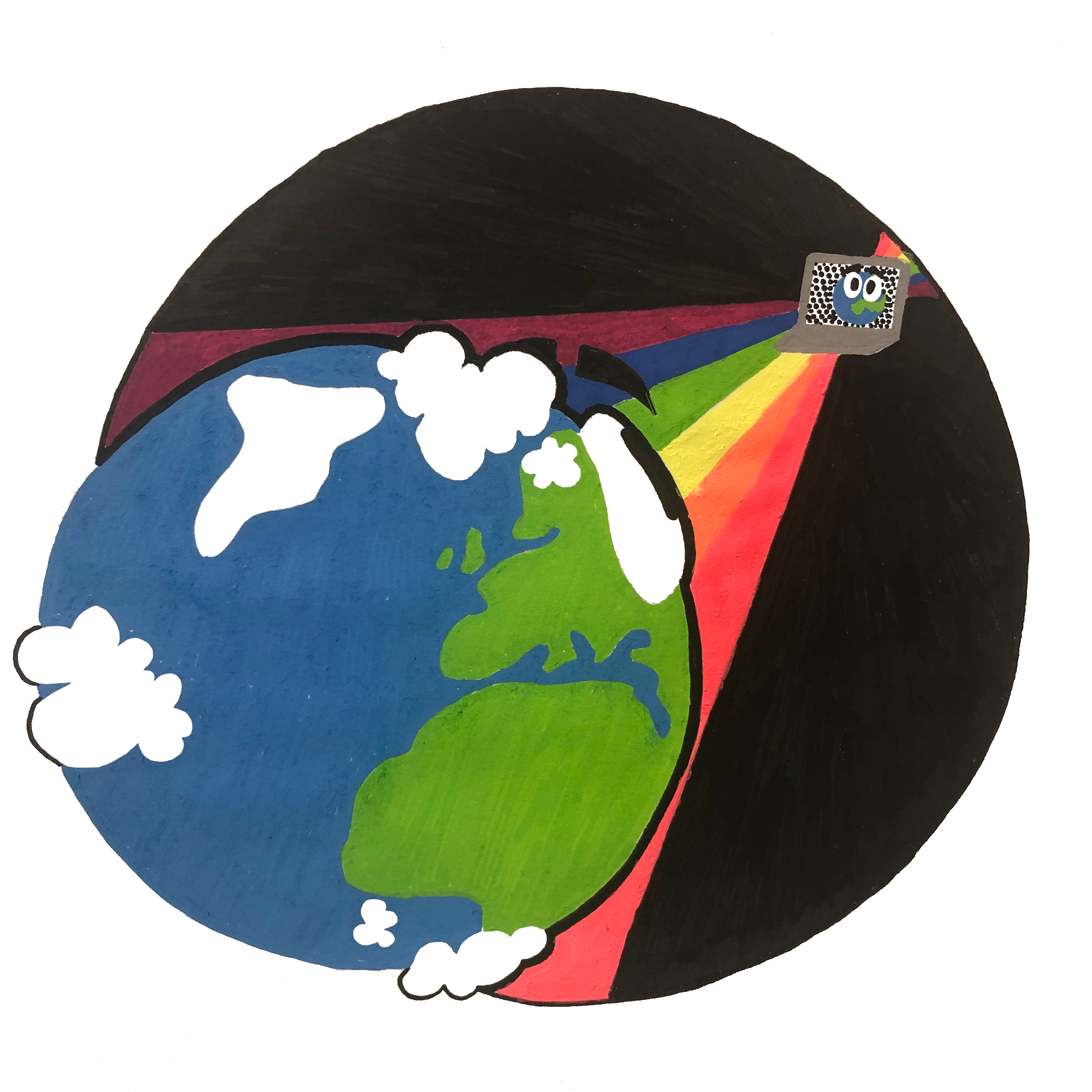Posts from January 2021
Project ExoEarth: A computer model of the Earth
How to start in the absence of a lab? Well just.. with scientist in America
I started my research last September. The most famous observatories
from all over the world are closed due to COVID-19. Here in Leiden, the university
is partially closed with the laboratories, so I am working from home. I haven't met
all my colleagues yet, however fortunately being an astronomer there are enough
questions to keep me busy. For example, I started working on a project together with
my supervisor and scientists from America. We are making a computer model of the Earth
while pretending it to be an exoplanet.
Let's start with the question: "How is it possible that we can see planets?".
They do not produce light themselves like stars (like the Sun). Yet on 21 December 2020,
Jupiter and Saturn were clearly visible during their
'cosmic kiss'. This is because their surface reflects the sunlight. We can then
see and measure this reflected light from Earth. Now think about the Moon. The Moon
has craters, mountains and seas that we can see with the naked eye as little specks.
The amount of light that a surface can reflect is also known as the albedo, which means
'whiteness'. A pure black moon (or any other object with a surface, like planets)
would have an albedo of 0.0 and being white it would have an albedo of 1.0.
At the moment, I am wondering, and hence investigating, how light from the Sun
is passing through the atmosphere and reflected on the surface of the Earth.
To investigate this, I look at all parts of the sunlight. What do I mean by that?
Well, I break the light down like a prism into visible light, ultra-violet and infra-red.
In this way I can look at the light as if it were a sort of rainbow. Would you like
to know more about these different types of light? Read on below!
 Working with the spectrum of light •I looked up the word spectrum
in the famous Dutch dictionary called Van Dale and found the following description:
"range of colours produced by the decomposition of light, e.g. through a prism".
Light consists of many tiny electromagnetic waves that we can see with our eyes. The
length from one peak to another peak in an electromagnetic wave is called a wavelength.
We do not describe this length in metres or centimetres (cm), but in nanometres (nm).
One cm is exactly 10,000,000 nm. Light with a wavelength of 420 nm is known as violet
light. Light with a wavelength of 780 nm can be seen as red light. All wavelengths
between 420 and 780 nm are therefore called visible light.
Working with the spectrum of light •I looked up the word spectrum
in the famous Dutch dictionary called Van Dale and found the following description:
"range of colours produced by the decomposition of light, e.g. through a prism".
Light consists of many tiny electromagnetic waves that we can see with our eyes. The
length from one peak to another peak in an electromagnetic wave is called a wavelength.
We do not describe this length in metres or centimetres (cm), but in nanometres (nm).
One cm is exactly 10,000,000 nm. Light with a wavelength of 420 nm is known as violet
light. Light with a wavelength of 780 nm can be seen as red light. All wavelengths
between 420 and 780 nm are therefore called visible light.
There is more to the universe than just visible light. As soon as we can no longer
see electromagnetic waves as light, we call it radiation. Waves with a wavelength
greater than 780 nm (red light) are called infrared radiation and waves with a
wavelength smaller than 420 nm (violet light) are called ultraviolet radiation.
If the waves become even smaller we call them X-rays. Where do these different
types of radiation come from? Relatively cold stars (with a temperature of 4000 °C)
and planets emit infrared radiation. Visible light comes from stars as big and hot
as our Sun. Hot stars (with a temperature of 10,000°C) can be 'seen' by looking at
ultraviolet radiation and finally hot gas (with a temperature of 10,000,000°C) produces X-rays.
These are just a few examples of the many different sources in the universe
that produce different types of radiation. However, I hope to have given you an idea
of where radiation (and thus visible light) comes from.
